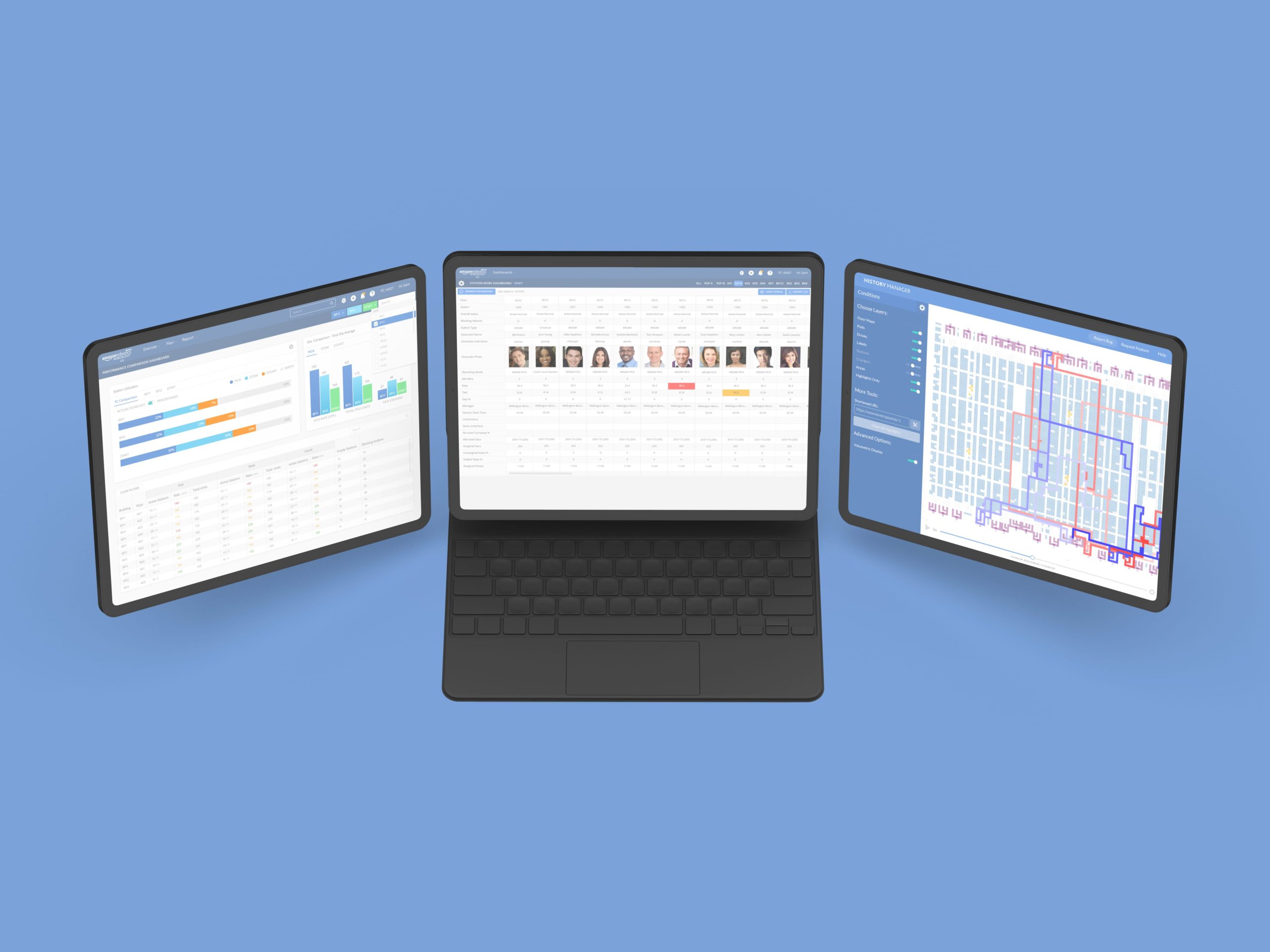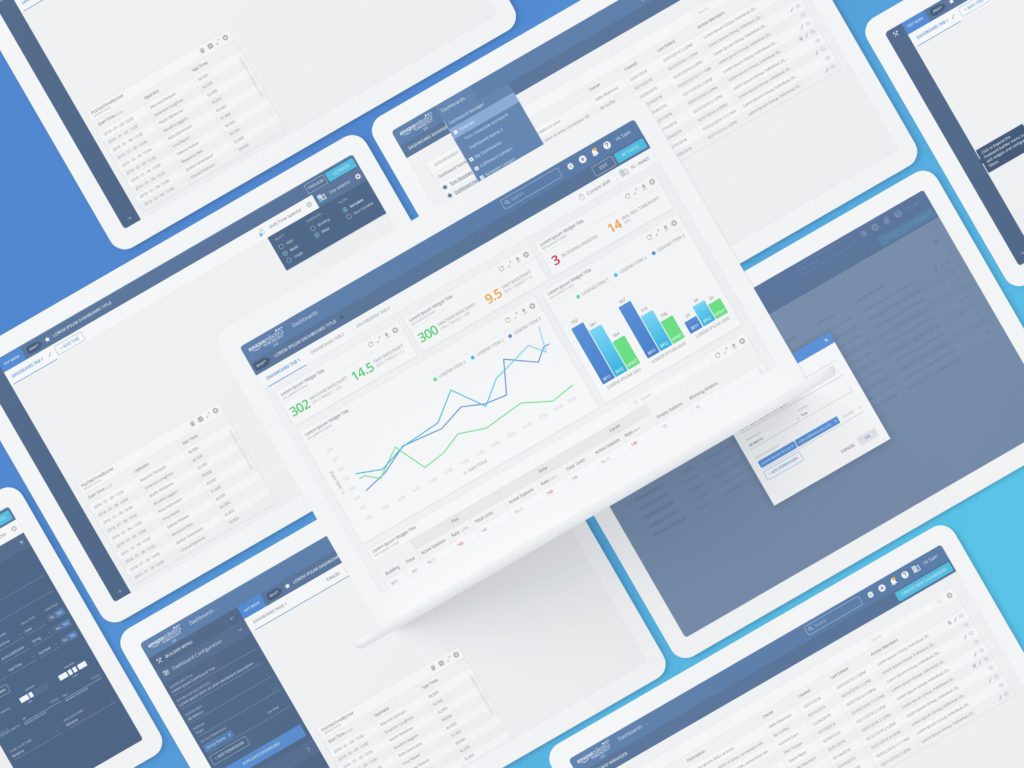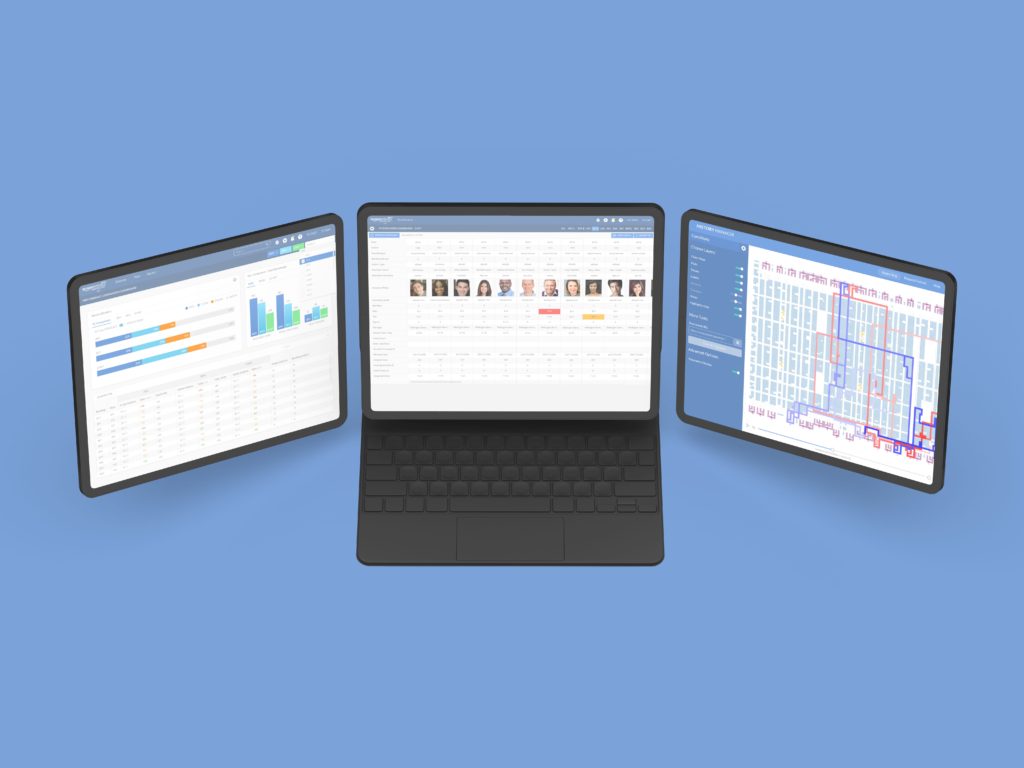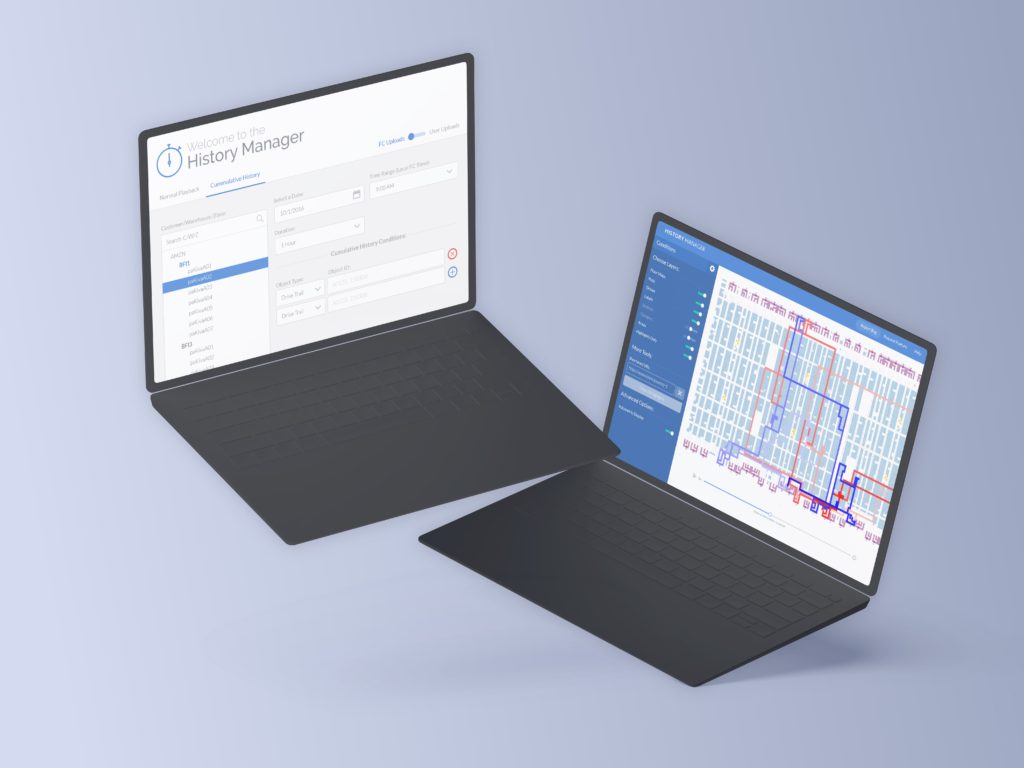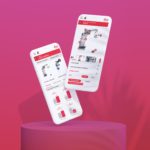TL:DR
Objective
Work in tandem with disparate internal software developers and product department leaders to employ product design best practices and design centric thinking for all business product initiatives. Focus on creating individual solutions as well as an enterprise suite of related tools for monitoring, executing, and analyzing warehouse operations and robotic assets.
Role
Cross-functional Strategic & Executive Lead Designer (Remote Leadership)
Functions
- Project Scoping & Estimations (per feature/application)
- Led discovery sessions and design reviews with clients and trusted design partners to product business requirements & solutions
- Produce low to high fidelity designs and prototypes
- Produce Standards for Design Patterns & Reusable Components
- Form and Lead a multi-disciplinary board of centralized design governance within the product organization, tasked with leading and training developers on design practices/processes/methodologies, etc.
- Designed and managed design library
- Led user-testing efforts/strategy
- Provided QA & Testing Support
Timeline
Ongoing multi-year consultancy – Iterative product design & development across various applications and business initiatives.
Objectives
Design and produce an enterprise suite of connected applications/tools that:
- Drives continuity of design across each tools (ensure cohesive experience across products, teams, codebases)
- Scale to administer multitudes of tenants (warehouses), each with a scalable number of custom lending environments (development sandbox, QA, planning, production), custom roles, and users.
- Promote and instill design centric thinking methodologies to development teams. Work design methodologies and best practices into development processes.
- Enables ongoing evolution of feature patterns and components via a shared living style guide and component library governance.
- Adhere to compliance and regulatory standards of accessibility, data accessibility, and interoperability
- Work to reduce the amount of data entry, analysis, or additional offline workflows required to run day-to-day warehouse operations
Process
Discovery Phase
The discovery phase of the project consisted of the following:
- Goal: Rapidly understand the problems space, understand business functions, and synthesize business strategic goals to define requirements and roadmap across applications.
- Results: We conducted initial research and user interviews in the first weeks with onsite warehouse operations and executive teams, to understand our user’s key motivations along with contextual knowledge of key pain points and needs across the platform ecosystem as a whole.
DESIGN PHASE
Many design phases converged simultaneously as disparate teams within the software development organization held separate yet interconnected features and tools and data across each application. Given the spread of resources and goals of each team, the work became a modular balancing act to deliver cohesive, comprehensive and tested solutions that could scale and reconfigure to meet the needs of more than one product/project as well as the true needs of our customer base. It paid dividends to organize each team to follow a shared design methodology – discover, iterate, reflect (then rinse and repeat), and to bring members of each team together to share problems, solutions, and shared experiences. Together a governance was forged between members of each product tribe capable of training, auditing, and assisting present and future developers to produce better lasting solutions.
- Warehouse Operations Management
- Station Forecast & Planning
- Loss Prevention & Historical Auditing
- Robotics Operations Management Suite
- Executive Reporting & Analytics Dashboard Engine
1.0 Warehouse Ops Management
Warehouse operations (goals, forecasts, conditions) are an ever-changing climate planned to the quarter hour within a smart warehouse. Changing metric goals align to shifting priorities and coaching needs for various operations within the good fulfillment departments. Through partnered rapid iterations with trusted on-site partners through various roles, wether focused on a singular section of a floor within one warehouse, to regional realtime health status and dynamic operational shifts, a we created a series of adaptable tools within a single platform to meet their various real-time and planning needs. The Warehouse Ops Management platform includes the ability to:
- Immediately shift between Warehouses (Macro), Floors, and Zone (mirco) views
- View — At a glance — the health of an entire floor or warehouse, as well as the ability to pre-empt and proactively diagnose common daily operational issues
- Notifications and alerting escalation engine
- Intuitive Machine Learning and optimization recommendations (robotic work reallocation, floor maintenance, proposed changes to configuration)
- Employee Station reporting – realtime metric and historical analytics
2.0 Station Forecast & Planning
The smart warehouse operates on a 24hr basis, dividing the day into various planned rotating schedules. Operational needs change by the minute, and the need to find a lasting solution for employee scheduling and planning is paramount to meeting business KPIs. Leveraging a national warehouse network employee service, paired with he operations management platform realtime operational reporting and configuration; we leveled up the warehouse operators tools and finally got them to ditch paper bulletin boards and reprinting excel spreadsheets every 15 minutes.
3.0 Loss Prevention & Historical Auditing
Throughout any large scale retail or fulfillment organization, loss prevention is a logical concern. In a smart where house a combination of individual analysts and operators across the organization utilize various tools to prevent loss and analyze historical data to prepare a more secure future and reduce business costs. Our approach to loss prevention focuses on the various data sources the facility can provide (robotic asset location and location history, security video feeds, product tracking, and work order/allocation history) By combining these data-sources, analysts and LP operators can replay history and review/analyze trended data regarding robotic and human behavior.
4.0 Robotics Operations Management Suite
As the ecosystem of applications grew the need for centralized controllers, access points, and configurations became increasingly necessary. We ventured to create a single area for our user base to manage their individual app and account settings, globally. The Robotics Operations Management Suite (ROMs) extended the users’s access to a suite of applications and tools across the ecosystem available to assist their functions. As time continued this tool kept users informed and connected to our solutions, and allowed our development teams to offer/promote new tools and solutions.
5.0 Executive Reporting & Analytics Dashboard Engine
The amount of data generated by a single warehouse every minute of everyday is incredible. For compliance, machine learning, and loss prevention, this data must be stored and if it is to be stored, we though it should be put to use. Through partnering with various site operators, regional supervisors, and executives we crafted an engine to query various data sources, and generate metric reports. Allowing users to query and gather data intuitively and quickly opened the possibilities of our data, and what new metrics, features, and applications could follow.
